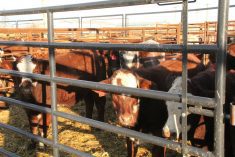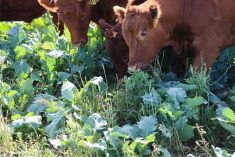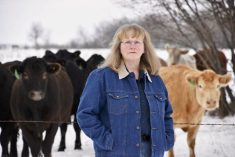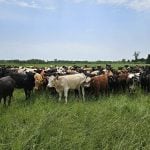Dugouts aren’t always ideal, and farmers who run rotational grazing or lack surface water are looking for options to get their herd a drink.
For many, that means pipelines, although designing the details may quickly become complex. Will the system draw on nearby open water? Will it be piped from a yard site or pumped from a well? Will the pipes be buried or above ground? How will it be powered? How much area must it cover and how many animals will it service? How many outlets should the pump source?
Read Also
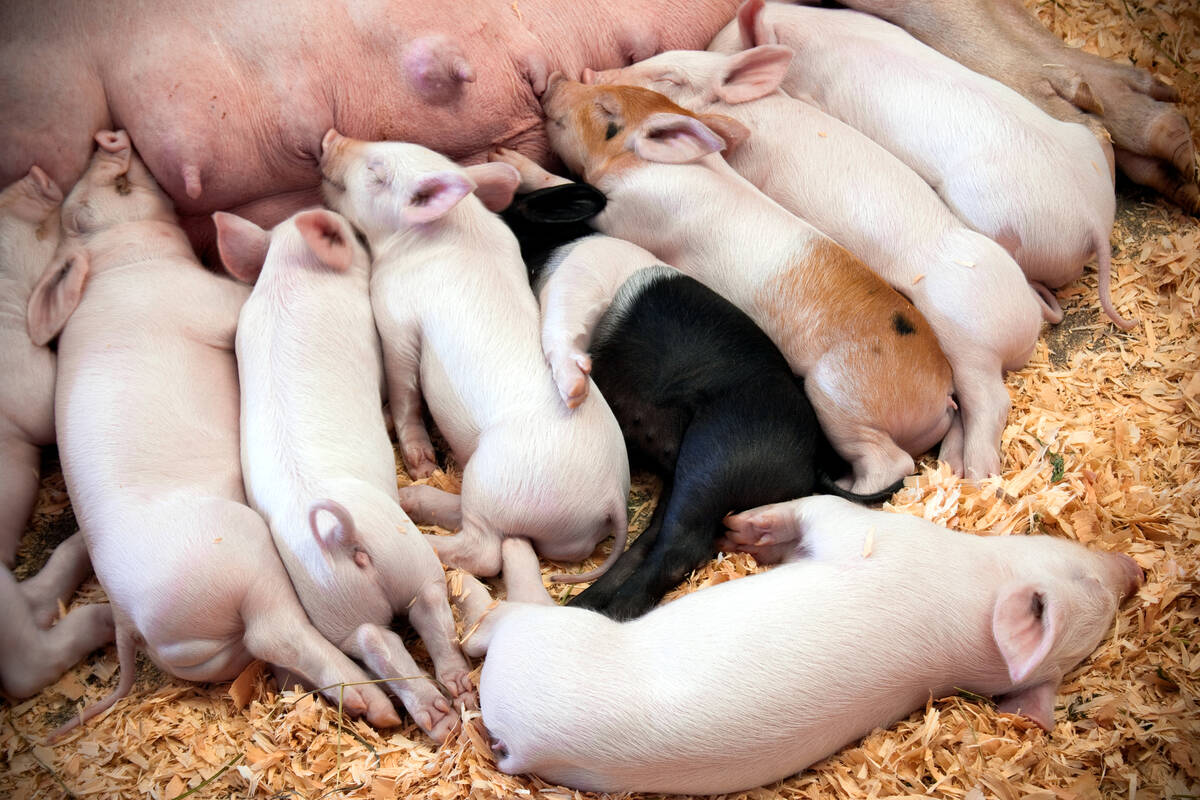
First-time pig mothers may need more lysine
Lysine feed recommendations may fall short for gilt pregnancies when it comes to making sure the mother pig can produce as much milk for her piglets as possible
- Read more: Watering cattle with solar power
The answers, according to researchers at the Manitoba Beef and Forage Initiatives (MBFI), will be largely farm specific.
MBFI tackled the problem in its latest round of research at the Brookdale site north of Brandon when it designed a solar-powered pipe system drawn from a nearby slough.
“In a wet cycle, we’ve had expanding wetlands in low areas on the farm, and so there’s lots of surface water, but we weren’t always able to access it or we’ve decided not to access it and fenced areas off. We needed an option that would deliver water to all corners of the pastures for us to be able to uniformly graze the farm,” Glenn Friesen, industry development specialist with Manitoba Agriculture and one of the leads at MBFI, said.
Friesen added that producers might also opt for a pump system to maintain water quality.
Ranchers in Saskatchewan made headlines in July after dugout water quality was linked to more than 200 animal deaths, an estimated loss of $300,000.
The deaths occurred at the height of this year’s drought in southern Saskatchewan. Tests later showed that the water contained lethal levels of sulphate and high levels of dissolved solids.
Comparing performance
This year, the MBFI waterer sourced about three-quarters of the Brookdale farm’s 640 acres, including an ongoing study comparing continuous grazing to planned grazing (also called rotational grazing, adaptive grazing or mob grazing). The more intensive system drastically increases stock density within small paddocks. Animals move paddocks often to let land rest.
Depending on the system’s intensity, paddocks can range from less than an acre to several acres, stock densities vary, and cattle may remain in a paddock for several days or only a few hours before being moved. The implications carry over into water management, as paddocks must all have a drinking source.

Pam Iwanchysko, research lead on the grazing system comparison, says MBFI’s above-ground pipes are well suited to the frequent paddock moves.
“One of the biggest benefits of that watering system is that it’s so flexible in terms of hooking up another line to go to a different paddock or, if it’s already near a paddock, we can just drill a quick hole and put in a spigot and we can hook up a waterer within, like, 10 minutes,” Iwanchysko said.
MBFI planned this year’s paddock system and watering system alongside each other and laid lines where there was an anticipated need.
The plan hit a number of roadblocks once livestock arrived, however.
Researchers quickly found that the smaller watering troughs, while sufficient for short-term paddocks, did not meet the needs of the continuously grazed herd.
“The continuous cows, they tend to travel more as a herd so they come all at once and one of the things that we did find was that the small watering trough wasn’t sufficient enough for them because they were coming all at once,” Iwanchysko said.
Two waterers were installed in 89 acres of continuously grazed land in an effort to mimic real-world circumstances.
“We were just trying to mimic, say, a dugout-in-one-big-pasture scenario,” Iwanchysko said. “What we found was that if we had a small waterer there they would drink all of the water out of it and then tip it over and then we’d have water spewing all over the place.”
Her team eventually upgraded the troughs in the continuous pasture to add more capacity and weight.
The number of solar panels, likewise, had to be tweaked as the pipeline system grew and it became apparent that more power was needed.
Other sources
Ray Bittner, livestock specialist with Manitoba Agriculture and speaker at an MBFI field day Aug. 30, urged producers to weigh other options before jumping in on a solar system.
In particular, he noted, pipelines may be run from an existing yard.
“Generally, if you’re trying to pasture on the same quarter section or even section of where your house is — if you can organize a system of underground pipelines, whether shallow or eight feet deep, it’s probably a better idea because of lower maintenance, lower upkeep costs and more certainly that there is actually going to be water for the animals where you want to water them because the pipelines are more dependable,” he said. “I still support the use of solar, but it’s better off in remote areas rather than close to the yard.”
Bittner warned that large herds require larger systems and may quickly become expensive.
“You have to do a lot of calculating before you make the decision on what you’re going to do,” he said.
Piping at MBFI could have easily been attached to the Brookdale site’s main water supply rather than using solar, Bittner said, but added that the research farm wanted to test out solar power for interested producers.
Ready to do your homework? It took most of the winter to plan the MBFI watering system, Iwanchysko said.
The researcher advised farmers to carefully consult with their solar equipment dealers to ensure the pumps, number of panels and overall system will meet their needs.
“I would basically present a farmer with the idea of actually getting an aerial photo and drawing and redrawing where you want to put those lines, because it wasn’t a one-step process,” she said. “We basically had to put some plans on paper, review them, (and then) replan out those lines.”








